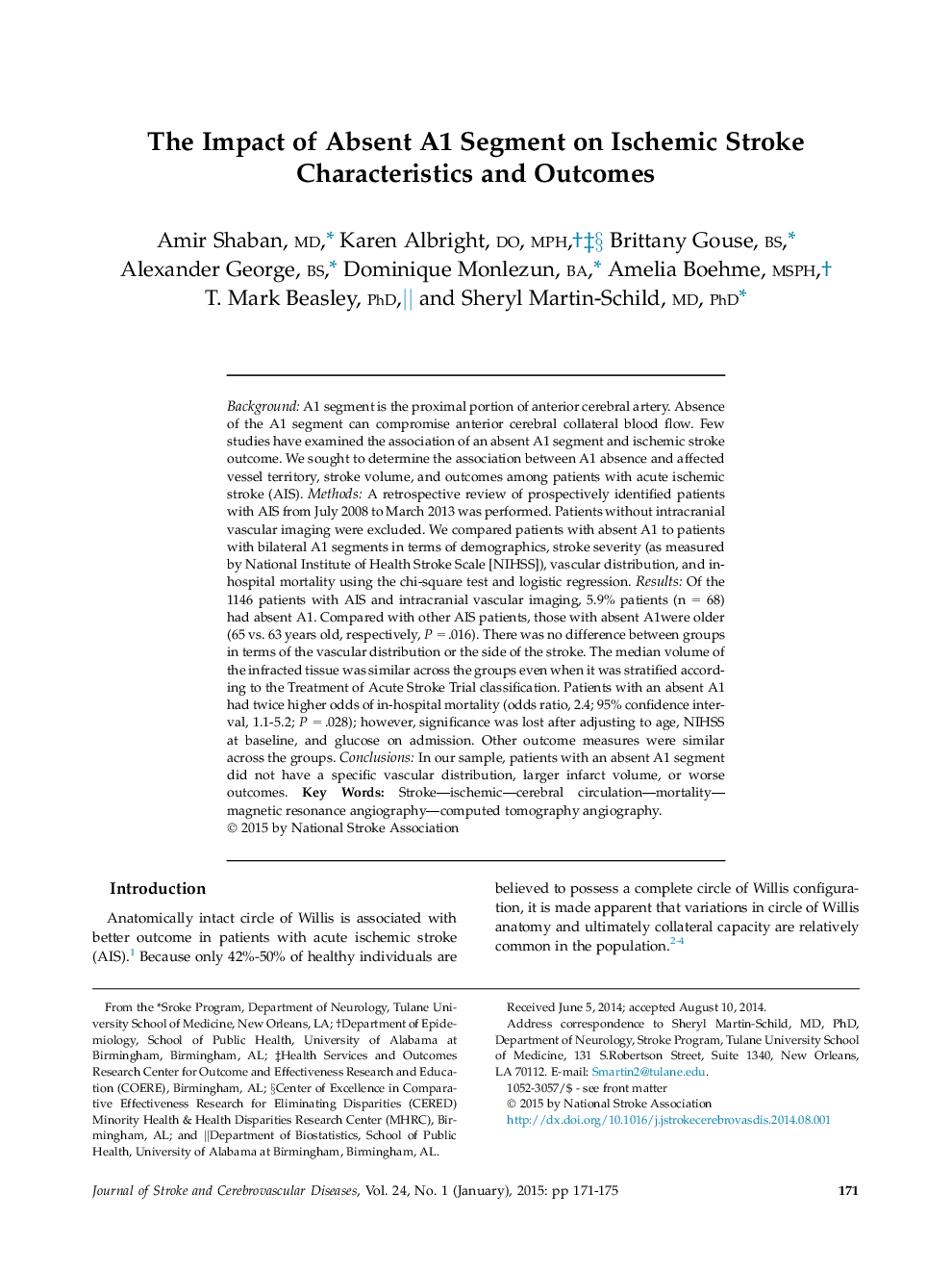| Article ID | Journal | Published Year | Pages | File Type |
|---|---|---|---|---|
| 2710327 | Journal of Stroke and Cerebrovascular Diseases | 2015 | 5 Pages |
BackgroundA1 segment is the proximal portion of anterior cerebral artery. Absence of the A1 segment can compromise anterior cerebral collateral blood flow. Few studies have examined the association of an absent A1 segment and ischemic stroke outcome. We sought to determine the association between A1 absence and affected vessel territory, stroke volume, and outcomes among patients with acute ischemic stroke (AIS).MethodsA retrospective review of prospectively identified patients with AIS from July 2008 to March 2013 was performed. Patients without intracranial vascular imaging were excluded. We compared patients with absent A1 to patients with bilateral A1 segments in terms of demographics, stroke severity (as measured by National Institute of Health Stroke Scale [NIHSS]), vascular distribution, and in-hospital mortality using the chi-square test and logistic regression.ResultsOf the 1146 patients with AIS and intracranial vascular imaging, 5.9% patients (n = 68) had absent A1. Compared with other AIS patients, those with absent A1were older (65 vs. 63 years old, respectively, P = .016). There was no difference between groups in terms of the vascular distribution or the side of the stroke. The median volume of the infracted tissue was similar across the groups even when it was stratified according to the Treatment of Acute Stroke Trial classification. Patients with an absent A1 had twice higher odds of in-hospital mortality (odds ratio, 2.4; 95% confidence interval, 1.1-5.2; P = .028); however, significance was lost after adjusting to age, NIHSS at baseline, and glucose on admission. Other outcome measures were similar across the groups.ConclusionsIn our sample, patients with an absent A1 segment did not have a specific vascular distribution, larger infarct volume, or worse outcomes.
